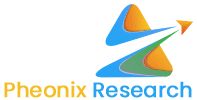Global Sulfuric Acid Market 2025-2033
Global Sulfuric Acid Market to Reach USD 23.6 Billion by 2033, Driven by Fertilizer Demand, Mining Expansion, and Feedstock Optimization — Phoenix Research
New Delhi, October 4, 2025:
The Global Sulfuric Acid Market continues to serve as a cornerstone of global industrial chemistry — underpinning fertilizer production, mining, and chemical manufacturing. As the world transitions toward resource-efficient and low-emission industrial systems, sulfuric acid remains critical to agricultural productivity, mineral processing, and chemical synthesis.
According to Phoenix Research’s Demand Forecast Engine, the global sulfuric acid market is projected to grow from USD 17.9 billion in 2025 to approximately USD 23.6 billion by 2033, registering a CAGR of ~3.5% during the forecast period. In 2024, Asia Pacific accounted for the largest share (≈45.2%), while Middle East & Africa is expected to be the fastest-growing region, with an estimated CAGR of 4.2% between 2025 and 2033.
“Sulfuric acid remains the lifeblood of phosphate fertilizers, metal extraction, and emerging battery-recycling processes,” said Rachna Patni, Senior Industrial Materials Analyst at Phoenix Research. “As producers modernize aging assets and optimize sulfur recovery, the sector is evolving toward greater sustainability and integration across fertilizer and refining value chains.”
Key Market Drivers
- Fertilizer Demand (Phosphate Processing)
Nearly half of global sulfuric acid consumption is tied to phosphate fertilizer production. Rising global food demand and yield-improvement programs across Asia, Latin America, and Africa continue to anchor the market. - Mining & Metallurgical Processing
Hydrometallurgical leaching in copper, nickel, and uranium production drives strong industrial demand, particularly across Africa and Latin America. - Feedstock & Emission Economics
Feedstock shifts between elemental sulfur recovery and smelter-sourced acid are influencing pricing and supply balance. Integration with refinery sulfur recovery units (SRUs) is enhancing plant efficiency and reducing waste. - Regulatory & Environmental Compliance
Tightening global SO₂ emission standards are propelling modernization—double-contact processes, tail-gas scrubbing, and recovery systems are becoming standard upgrades. - Emerging End-Uses (Battery Recycling & Specialty Chemicals)
Hydrometallurgical battery recycling and specialty acid applications are providing incremental growth opportunities, supporting circular-economy initiatives.
Market Segmentation
By Production Process
- Contact Double-Contact Process (Modern Plants)
- Single Contact / Older Plant Processes
- Feedstock Route: Elemental Sulfur / Pyrite & Smelter Gas
By Concentration / Grade
- 98% Grade (Commercial Concentrates)
- 96–98% Industrial Grades
- Fertilizer-Grade & Specialty Grades
By Application
- Fertilizers & Phosphate Processing
- Mining & Metallurgical Processing
- Chemical Intermediates & Acidulation (dyes, pigments, detergents)
- Metal Pickling & Surface Treatment
- Petroleum Refining / Sulfur Recovery Integration
- Battery Recycling & Specialty Industrial Applications
By Distribution Channel
- Bulk Tanker & Pipeline (Industrial Users)
- Rail & ISO Tank Containers
- Packaged (Specialty and Smaller Industrial Consumers)
Regional Insights
Asia Pacific — Largest Region (≈45.2% share, 2024)
Dominates the market due to large-scale phosphate fertilizer and mining activity in China and India. Integrated fertilizer complexes and captive acid facilities remain prevalent.
Middle East & Africa — Fastest-Growing Region (CAGR 4.2%)
Growth is led by new phosphate projects in North Africa and refinery-linked sulfur recovery facilities across the Gulf.
North America — Steady Growth (CAGR 3.1%)
Driven by specialty chemicals, mining, and refinery integration projects. Environmental regulations continue to influence investment decisions.
Europe — Mature Market
Focuses on plant modernization, import substitution, and compliance with strict emission norms.
Latin America — Emerging Growth Market
Strong expansion in phosphate fertilizer and mining operations—especially in Brazil and Peru—is supporting regional demand.
Leading Companies
Key market participants identified by Phoenix Research’s Event Detection Engine include:
- BASF SE
- DuPont / Chemours
- Nutrien Ltd.
- Yara International ASA
- The Mosaic Company
- Tata Chemicals / Tata Group Affiliates
- OCI NV
- Regional producers across China, India, Russia, Middle East, and South Africa
These players are pursuing plant modernization, feedstock recovery integration, and supply-chain optimization to improve efficiency and sustainability.
Strategic & AI-Backed Insights
- Phoenix Demand Forecast Enginemodeled sulfuric acid demand based on fertilizer output, ore-processing throughput, and chemical manufacturing trends.
- Construction Activity Mapping Systemtracked major refinery-linked acid and phosphate facility expansions across APAC and MENA through 2028–2032.
- Sentiment Analyzer Tooldetected rising regulatory and community engagement signals around acid-plant emissions, driving modernization priorities.
- Automated Porter’s Analysisrevealed moderate supplier power (feedstock volatility), high entry barriers (capital intensity), and steady buyer consolidation around integrated fertilizer producers.
Market Forecast Snapshot (2025–2033)
| Metric | Value |
| 2025 Market Size | USD 17.9 Billion |
| 2033 Market Size | ~USD 23.6 Billin |
| CAGR (2025–2033) | ~3.5% |
| Largest Region (2024) | Asia Pacific (~45.2%) |
| Fastest Growing Region | Middle East & Africa (~4.2% CAGR) |
| Top Segment | Fertilizers / Phosphate Processing |
| Key Trend | Feedstock optimization & emission control modernization |
| Future Growth Focus | Battery recycling, refinery integration, and circular sulfur recovery |
Final Takeaway
The Global Sulfuric Acid Market remains an indispensable industrial backbone—anchored in agriculture and mining, yet poised for transformation through circular sulfur recovery and environmental modernization. Strategic advantage will hinge on feedstock sourcing, plant efficiency, and integration with downstream consumers.
At Phoenix Research, our AI-backed sectoral intelligence—spanning feedstock economics, project mapping, and policy analytics—empowers producers, fertilizer manufacturers, and investors to optimize capacity planning, partnership models, and greenfield project execution in the global sulfuric acid value chain.
To get the entire report please use the below link
